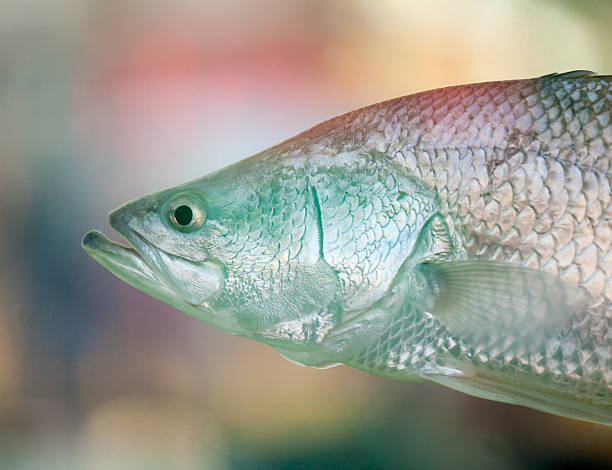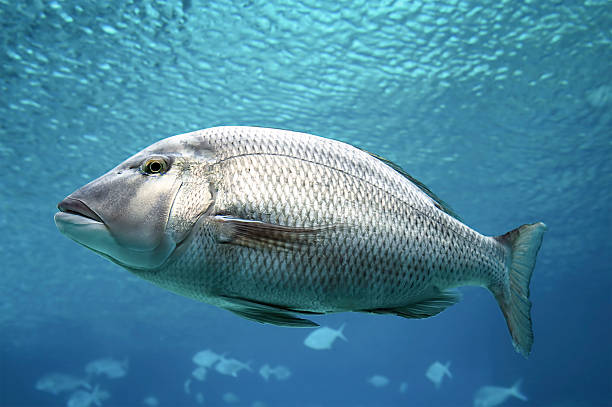Barramundi: The Unique Fish
Barramundi has its roots in the coastal regions of Southeast Asia, particularly in countries like Australia, Thailand, and Malaysia. The name “Barramundi” is derived from an Aboriginal1 word meaning “large-scale fish” in Australia, reflecting its significant size and prominence in the region. Over time, barramundi has spread to other parts of the world, including North America and Europe, where it is now farmed and enjoyed.
Get Quotes Now
Physical Characteristics of Barramundi
Barramundi can grow to impressive sizes, with some individuals reaching lengths of up to 1.8 meters (6 feet) and weighing more than 60 kilograms (130 pounds). The fish has a distinctive appearance, with silver scales, a long, streamlined body, and large, muscular fins. Its head is somewhat flattened, and it has a prominent, sharp jaw, which helps it catch its prey in the wild.


Barramundi Habitat and Distribution
Barramundi can be found in both freshwater and saltwater environments, including estuaries2, rivers, and coastal areas. These fish are highly adaptable, able to thrive in different conditions, from brackish water to full saltwater. In the wild, they prefer shallow, warm waters, where they can find an abundance of food such as small fish, crustaceans3, and insects.
Barramundi Farming and Sustainability
In recent years, barramundi farming has become a significant industry, particularly in Australia and Southeast Asia. Barramundi farms are designed to provide a controlled environment for raising the fish, ensuring a consistent and sustainable supply of this highly sought-after fresh seafood. Sustainable farming practices have been implemented to reduce the environmental impact, ensuring that barramundi is available for future generations.
Nutritional Benefits of Barramundi
NTUC Barramundi is not only delicious but also packed with nutrients. It is an excellent source of lean protein, omega-3 fatty acids, and essential vitamins and minerals such as vitamin D, vitamin B12, and selenium. The low-fat content of barramundi makes it a healthy option for those looking to maintain a balanced diet. The fish’s omega-3 fatty acids are especially beneficial for heart health, making it a valuable addition to any meal plan.
How to Cook Barramundi: Delicious Recipes
Barramundi’s mild flavor and flaky texture make it a versatile ingredient in many culinary traditions. Here are some popular ways to cook barramundi:
- Grilled Barramundi: A simple and flavorful preparation, grilled barramundi is seasoned with herbs and spices, served with a side of roasted vegetables or a fresh salad.
- Pan-Seared Barramundi: Lightly searing the fish in a hot pan creates a crispy crust while keeping the flesh tender and juicy. This method is perfect for a quick dinner.
- Barramundi Fish Tacos: A modern twist on a classic dish, barramundi fish tacos are packed with fresh ingredients like avocado, cilantro, and lime, offering a delicious fusion of flavors.
- Barramundi Fillets in Lemon Butter Sauce: For a more indulgent option, barramundi fillets can be cooked in a creamy lemon butter sauce, complemented by steamed vegetables or pasta.
Barramundi vs. Other Fish Species
Barramundi is often compared to other popular fish species like bass, snapper, and tilapia. While all of these fish are delicious, barramundi stands out due to its unique flavor and texture. Unlike tilapia, which is often mild and slightly sweet, barramundi has a more distinct, richer taste. Its firm yet flaky texture makes it an excellent choice for grilling, baking, or frying.
The Popularity of Barramundi in Culinary Traditions
Barramundi is a favorite in many parts of the world, particularly in Australian cuisine. It is featured in traditional dishes, such as barramundi pie and barramundi with chips, similar to fish and chips. In Southeast Asia, the fish is often used in curries, stir-fries, and grilled preparations. As global demand for high-quality, sustainable seafood grows, barramundi’s popularity continues to rise in many international kitchens.
Barramundi’s Role in the Environment
Beyond its culinary appeal, barramundi also plays an important role in its native ecosystem. As a predator, it helps regulate populations of smaller fish and invertebrates, maintaining the balance of its habitat. Barramundi’s adaptability to both freshwater and saltwater environments further highlights its ecological importance.
Health Benefits of Eating Barramundi
Eating barramundi offers numerous health benefits. As a high-quality protein source, it helps build and repair tissues, supports immune function, and promotes muscle growth. Additionally, the fish’s omega-3 fatty acids contribute to better brain health and may lower the risk of chronic diseases like heart disease. Its low levels of mercury also make it a safer option compared to some other large fish.
Barramundi in the Global Seafood Industry
As the global demand for sustainable seafood increases, barramundi has gained significant traction in the market. Many seafood distributors now offer farmed barramundi that meets rigorous sustainability standards, ensuring that the fish is produced in an environmentally responsible manner. This helps to protect wild populations and ensures that barramundi remains a reliable food source for years to come.
Conclusion
Barramundi is a versatile, flavorful, and nutritious fish that continues to gain popularity in both home kitchens and professional restaurants worldwide. Its sustainability, health benefits, and culinary flexibility make it a top choice for seafood lovers. Whether grilled, pan-seared, or included in a flavorful curry, barramundi proves to be a valuable addition to any diet.
Frequently Asked Questions
Yes, barramundi is rich in omega-3 fatty acids, protein, and essential vitamins and minerals, making it a healthy choice for heart health and overall wellness.
Barramundi can be grilled, pan-seared, baked, or used in fish tacos, curries, and other dishes.
Yes, barramundi is often farmed sustainably, with practices in place to reduce environmental impact and ensure long-term availability.
Barramundi has a firmer texture and a more distinct flavor than tilapia, making it a preferred choice for grilling and other high-heat cooking methods.



